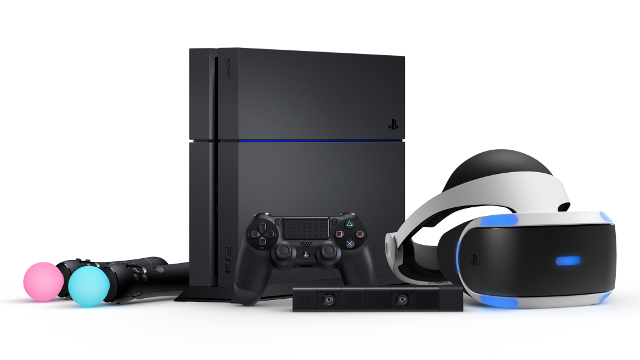Sony has finally revealed the full launch details for its upcoming virtual reality headset, the PlayStation VR. Now that we know exactly what to expect once it hits the market, it's time for PS4 owners to make the choice as to whether or not they'll invest in one at launch.
To help you decide if this VR solution is for you, I've laid out 10 important details about the PSVR. Check them out below.
It requires a PlayStation Camera. That's right, one of the items necessary to make PSVR function isn't included in the $399 box. The camera is used to track head movement, which is vital in VR experiences. As such, you can argue that technically PSVR costs $459.99. Sony has argued that "millions" of PS4 owners already have a camera, and it didn't want to include something in the base SKU that so many consumers already own.
The launch library includes more than a dozen games. These games include BattleZone, Headmaster, Tumble VR, and RIGS. These are smaller, indie-developed games that are developed specifically for VR, and are likely to cost $39.99 or less. By the end of 2016 more than 50 games will be available for PSVR with many more to come from its 230+ supporting studios.

The display specs are good. The PSVR is equipped with a 1920 x RGB x 1080 OLED screen measuring at 5.7" with a 90/120hz refresh rate. The screen won't be a weakness of the PSVR with an impressive resolution and support for 120 frames per second. These specs will be vital for providing a virtual reality experience that doesn't cause fatigue or sickness during long game sessions.
It's considered an entry level VR headset. The more expensive Oculus Rift and HTC Vive, in conjunction with modern PC hardware, have much greater potential than PSVR. That said, PSVR is more affordable and intended to be something for consumers desiring to experience virtual reality without investing $1000+. It's also purpose-built specifically for one system, the PS4, allowing VR developers to optimize their games much better than on competing headsets.
It's priced for profit. Sony has confirmed that it will have a slight profit margin when it sells the PSVR at $399. This allows the company to make back some of the millions of dollars it has invested in research and development, and take a much smaller financial risk with the headset's public debut.
Move controllers are optional and not included. It is confirmed that all PSVR games are required to support the default DualShock 4 controller. That said, Move would be a worthy investment for virtual reality as they allow for free movement and better immersion. You might remember Move controllers from the PS3 era, and the Move controllers recommended for the PSVR are exactly the same.

It has a "Wii sized" box attached to it. The cables feeding from PSVR to the PS4 have an in-line processing unit. It's a slim, black box that transforms the signal coming from the PS4, using 3D audio processing to provide mirrored or separate audio (depending on the game) for someone using the headset. In effect, it allows for the PS4 to display a separate video and audio experience on the television and headset so that multiplayer experiences can be built for the device.
It includes headphones, but you can use your own. The headset has a stereo headphone jack that you can use to plug in your own headphones. Or, you can use the stereo headphones that are included with the device. It's up to you, but you'll definitely want to wear headphones when using the PSVR for the purposes of immersion.
It's arriving October 2016, but already available for pre-order. Sony is preparing to ship the device worldwide for its anticipated launch window later this year. Following yesterday's announcement, pre-orders were opened at several retailers, and sold out within minutes at a few of them such as Amazon.co.uk and EBGames Australia. You'll want to pounce on any shops that make the headset available for pre-order if you intend to use PSVR this October.
Sony isn't expecting it to sell large volume. Due to virtual reality's high cost of entry, all three major headset manufacturers aren't expecting a ton of units to sell right away. Instead, they are investing in the future, where they expect consumers to slowly but surely become interested in the technology as the cost of headsets are reduced.







